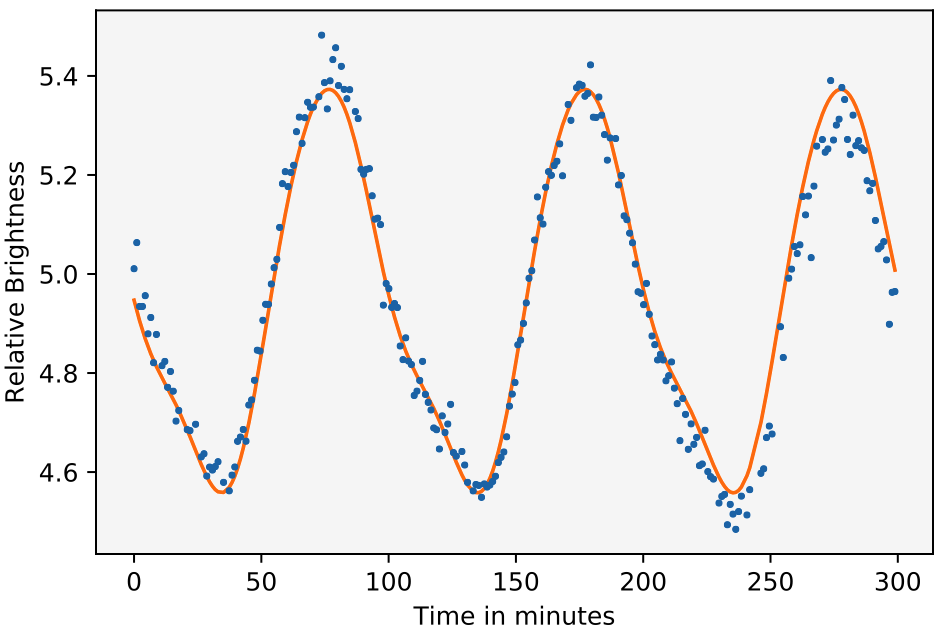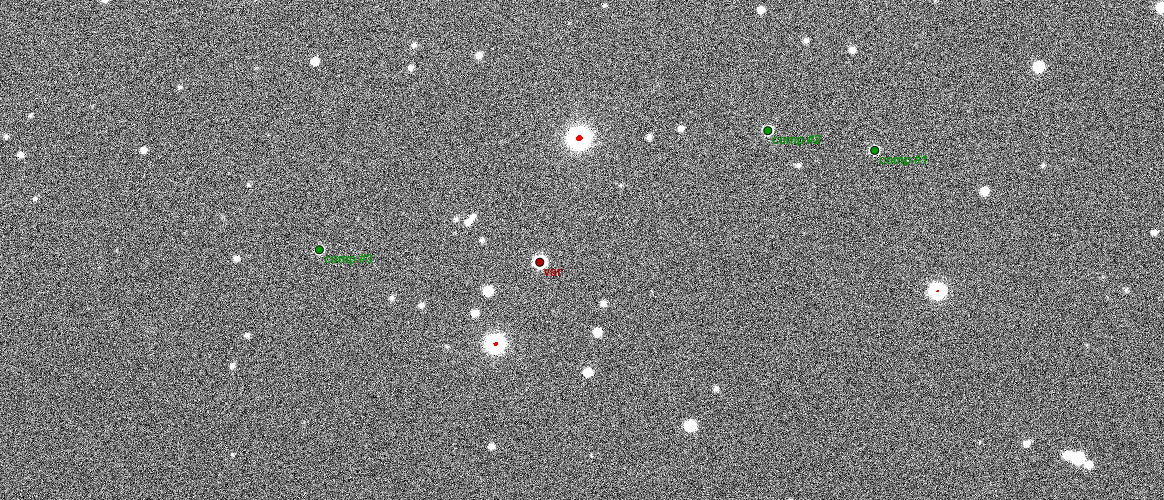Julian Schulze & Aleksandar Vučković

In the context of the physics lab course ”Photometry in Astrophysics”, we studied the variable star BN Tri, a part of the constallation Triangalum located in the northern sky. A variable star is a star whose brightness changes over time, in contrast with the usual notion that stars are never-changing and thus useful for things like navigation. A change in brightness can be introduced by oscillations of the star itself, or it can result from the fact that in a binary-star system, one star simply blocks the view of the other. To characterize these phenomena, we calculate the light curve, the brightness of the star over time, and analyze the frequencies by which it changes. For our purposes, ”brightness” is measured by the number of photons which reach our camera. In this experiment, we perform so-called differential photometry, such that the brightness is discussed relative to another star ”near” our star of interest. This way, we account for systematic erros like effects of earth’s atmosphere.
An example of a raw picture taken is given above, which shows some of the stars marked. The brightness of the stars marked in green, called comparison stars, is averaged and compared to the brightness of BN Tri marked in red and annotated ”var”. This relative brightness plotted over time results in the light curve shown on the right.
Finally, we can calculate the period of the lightcurve oscillation to be P = (100.55 +- 0.23) minutes, which differs from the reference value of P(ref) = 100.85 minutes by only 0.3%.

